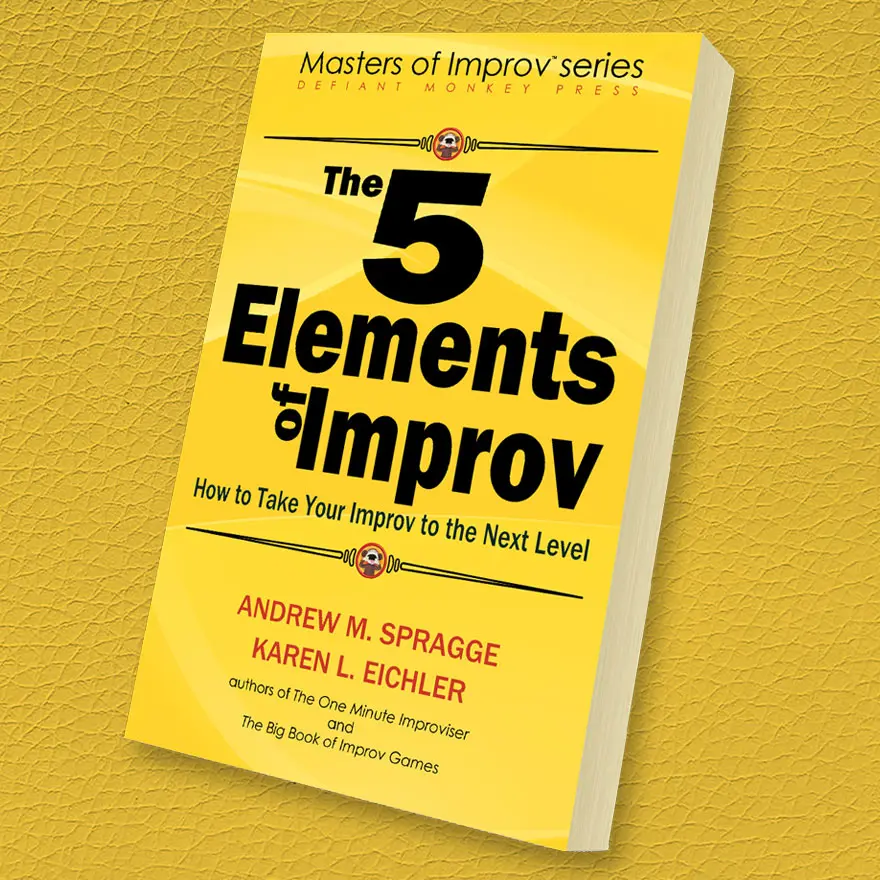In this series of articles, we look at popular improv games and offer recommendations on the best ways to play them

Note: In this post, “Whose Line?” refers to the game, not the TV show.
We make every effort to attend performances by improv groups around the country and across the border (so much great improv in Canada, and we’re not just talking Second City!) and watch online videos of companies around the globe. It’s important from a learning perspective to do so; you can’t properly self-assess if you have no experience of what’s going on outside your own field of vision.
Bear in mind, there are as many variations to games as there are groups; what we present here is simply an analysis of what brings out the best in the core games. It is a best practice to learn the game as it was designed before making changes; learn how to play by the rules, and you will learn when and how to break those rules.
The game of “Whose Line” goes many other names, such as “Blind Line” and “Pockets”. Whatever name you use, how you play it will decide how successful you are.
To play “Whose Line”, it is first necessary to have audience members write sentences on slips of paper. How many depends on how many actors will be in your scene. As a two-player group, we get four sentences each; usually three or four per player is enough. A suggestion is given by the audience and a scene is played. During the scene a player will take a sentence out of their pocket, read it aloud and incorporate it into the scene. Here is where things get fuzzy.

A natural inclination when first learning “Whose Line” is to “read a sign” or preface using the line by saying something like, “As my grandmother used to say,” or “Let me read you something from the manual.”
While you may get a quick laugh, you have missed the point of the game.
The point is to use the sentences as dialogue, and then skillfully justify and incorporate it into your scene, moving it forward in a potentially new and interesting direction. Refusing to use the sentence as dialogue is a fear reaction; it negates an actor’s responsibility for taking ownership of the line. It’s safe to place the words into the mouth of someone else, and it allows the scene to continue unchanged until it sinks to the level of boredom.
Change is what makes scenes interesting; to refuse to change is to refuse to entertain.
“Whose Line” can be considered a game of “mini tilts”. A tilt is by definition something that pushes a scene into a new trajectory. It is necessary from a storytelling aspect to have tilts; they keep the story fresh and interesting. Every audience sentence has the potential to provide a tilt, but only if it is used in an active, not passive, manner.
We recently performed at a Moose lodge, and one of our lines was “Every start is a new beginning.” This line alone sent us, as a hotel maid and guest, spiraling into a love affair that would not have happened if not for the audience’s sentence. If we had read it as a quote from someone not present on stage, it may have gotten a chuckle from the audience, but the scene would have stayed where it was and been far less interesting.
We understand – it’s scary to have another person put words in your mouth. It’s challenging to have to incorporate a strange line into your scene immediately. It’s tough to avoid using the “I’m crazy” explanation when a bizarre sentence comes up. But then again, this is why we do what we do. To do anything less is to give into fear.

The 5 Elements of Improv – How to Take Your Improv to the Next Level

